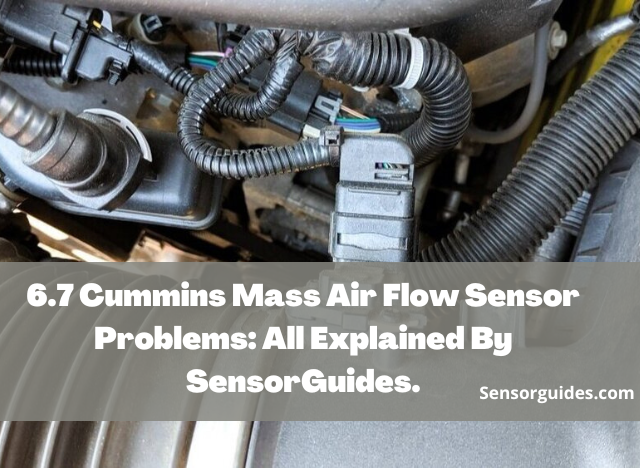Can You Check a MAF Sensor with a Multimeter? A Comprehensive Guide
Quick Read: Yes, you can check a Mass Air Flow (MAF) sensor with a multimeter. By measuring the voltage or frequency output of the MAF sensor, you can assess its performance. This method provides valuable information for diagnosing potential issues and ensuring proper engine functionality.
The Mass Airflow (MAF) sensor is a critical component of modern engine management systems. It measures the amount of air entering the engine, providing vital data for fuel delivery and combustion optimization. Testing the MAF sensor is essential for diagnosing potential issues and ensuring optimal engine performance.
In this article, we will explore whether you can check a MAF sensor with a multimeter, the benefits of this testing method, and provide a comprehensive guide to performing MAF sensor testing with a multimeter. Welcome to SensorGuides.
Table of Contents
What does the Mass Airflow (MAF) Sensor do?
The Mass Airflow (MAF) sensor plays a vital role in the engine’s air-to-fuel ratio calculation. It measures the amount of air entering the engine, allowing the engine control unit to adjust fuel delivery accordingly.
However, the MAF sensor can be affected by various issues such as contamination, sensor element damage, or wiring problems, leading to inaccurate readings and compromised engine performance.
How to test the MAF Sensor with a multimeter?
Using a multimeter to test the MAF sensor is a practical and effective method. It allows you to measure the sensor’s voltage or frequency output, providing valuable information about its performance.
Here’s a step-by-step guide to testing the MAF sensor with a multimeter:
Purpose and benefits of using a multimeter: Utilizing a multimeter allows you to measure the voltage or frequency output of the MAF sensor, providing a quantitative assessment of its performance. This method helps diagnose potential sensor issues and validate the need for further investigation or repair.
Preparing the vehicle for testing
Before starting the MAF sensor testing, ensure the engine is turned off and has cooled down. Familiarize yourself with the MAF sensor’s location in your specific vehicle model by referring to the owner’s manual or online resources.
Step-by-step guide for MAF sensor testing with a multimeter:
- Accessing the MAF sensor: Locate the MAF sensor, usually positioned between the air filter and the throttle body. Remove any necessary components to access the sensor safely.
- Setting the multimeter: Set the multimeter to measure voltage or frequency, depending on your vehicle’s type of MAF sensor. Consult the vehicle’s manual or online resources for the appropriate setting.
- Testing the MAF sensor’s voltage or frequency output: Connect the multimeter probes to the appropriate terminals on the MAF sensor connector with the engine off. Start the engine and observe the multimeter reading. Compare the obtained value to a functioning MAF sensor’s normal voltage or frequency range.
- Interpreting the test results: If the multimeter reading falls within the normal range, the MAF sensor is operating correctly. Abnormal readings may suggest potential sensor issues or other factors affecting performance.
Interpreting Test Results
Interpreting the test results requires understanding a functioning MAF sensor’s normal voltage or frequency ranges. While specific ranges vary between vehicle models, abnormal readings can indicate potential issues. Here are some key points to consider:
- Normal voltage readings typically range from 0.5 to 5 volts, but consult your vehicle’s manual for precise specifications.
- Abnormal readings, such as excessively high or low values, can suggest a faulty MAF sensor, wiring problems, or other issues affecting sensor performance.
- It’s important to consider other factors that may influence the test results, such as engine temperature, air filter condition, or other components affecting airflow. Conducting additional tests or consulting a professional may be necessary for a comprehensive diagnosis.
How to test mass air flow sensor without a multimeter?
Testing the Mass Air Flow (MAF) sensor without a multimeter is still possible using alternative methods. One approach is to visually inspect the sensor for any physical damage or contamination. You can also try cleaning the sensor using specialized MAF sensor cleaner, as dirt or debris buildup can affect its performance.
Another option is to use a scan tool to check for any trouble codes related to the MAF sensor. Observing the engine’s behavior, such as rough idling or hesitation, can provide insights into potential MAF sensor issues. While a multimeter provides more accurate readings, these alternative methods can still help identify possible problems with the MAF sensor.
What is the Importance of Accurate MAF Sensor Testing?
Accurate MAF sensor testing is crucial for maintaining optimal engine performance and troubleshooting potential issues. By identifying sensor problems promptly, you can take preventive maintenance measures and avoid more significant engine problems.
Testing the MAF sensor with a multimeter provides valuable insights and contributes to overall vehicle health and longevity.
Conclusion
Using a multimeter to test the MAF sensor is a practical and effective method for diagnosing potential issues and ensuring optimal engine performance. You can confidently perform MAF sensor testing by following the step-by-step guide outlined in this article. Accurate testing and interpretation of results help identify potential sensor issues, contributing to preventive maintenance and troubleshooting efforts. Regular MAF sensor testing and maintenance play a crucial role in maintaining engine performance, fuel efficiency, and overall vehicle reliability.




